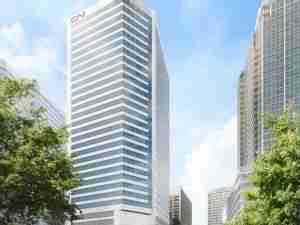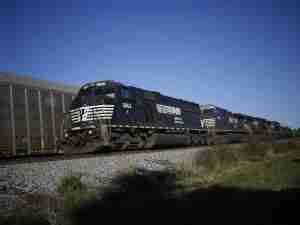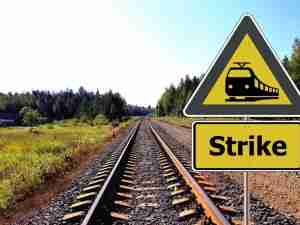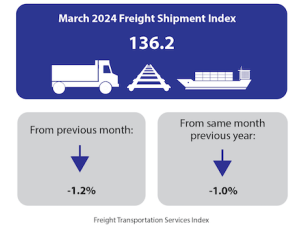Bullet-Train Plan Banks on Texas Turning More Urban, Less Cowboy
By: | Jul 21 2016 at 05:00 AM | Intermodal
A $100 million bet says that thousands of Texans will abandon cars and pick-ups for a needle-nosed bullet train that zips past cattle and ranches to deliver riders from Dallas to Houston in 90 minutes—a third of the time required to drive.
The Texas Central Railway is only a virtual train, as almost all the $12 billion for the nation’s first privately financed high-speed rail line has yet to materialize, not to mention the land it would require. But there’s a real fight pitting rural, multi-generational landowners along the proposed route against newly arrived urbanites who seek faster travel between the nation’s fourth- and fifth- largest metropolitan areas.
The bullet train plan reflects the Texas credo that the private sector can do anything better than the government. California has watched the projected cost of publicly financed bullet train linking Los Angeles and San Francisco more than double the $33 billion original cost, and a private Orlando-to-Miami line in Florida struggled to sell bonds even with a tax exemption. The 245-mile (394-kilometer) route across the east Texas flatland, though, is rooted in the distinctive belief that passenger trains can be built and operated without direct public subsidies.
“We will not pursue federal or state grants,” vowed Tim Keith, chief executive officer of Texas Central Partners LLC. “Taxpayers will never have exposure to this project.”
Texas Central is teaming with Central Japan Railway Co., which will provide the technology. So far, officials have raised $100 million from investors. The full $12 billion would come in 2017 from federal transportation loans, Japanese banks and equity investments from pension funds and others who invest in infrastructure projects. The companies may also seek to sell tax-exempt private-activity bonds, which a government would issue on their behalf.
Along the Trail
Traffic between the cities convinces the company there’s a market for high-speed rail. Southwest Airlines long ago proved it as a viable corridor, said Adie Tomer, a fellow at the Brookings Institution who specializes in transportation infrastructure.
“There is still great potential to have private financing as the lead investment,” said Tomer. “There are a lot of moving parts, with many openings for success and failure.”
Keith said the rail line will target business travelers and ticket prices will be competitive with air travel between Dallas and Houston. The migration to the south and urbanization of Texas build the case for rail travel with each passing year, he said.
“There’s a resurgence in the appetite for rail,” Keith said. “The road can only grow so much.”
Skeptics say a profitable, privately funded railroad that makes 60 trips daily and travels at 200 miles per hour stretches credulity. European trains are subsidized, they note. So is Amtrak, the nation’s only passenger rail service. Ultimately, critics say, one of two things will happen: Taxpayers will have to open their wallets, because Dallas and Houston politicians won’t let the line fail, or government-run Amtrak will take over.
“Their CEO says, ‘We’ve got a great project, you’ll love it, trust us,’” said Blake Beckham, a Dallas lawyer representing dozens of landowners fighting the railway’s effort to obtain land through the government’s power to seize it as a public good. “Well, nobody else is stupid enough to build a train in Texas.”
Cactus Flats
The fight reflects fundamental changes in increasingly urbanized Texas, which at 27.5 million people trails only California in population.
“Texas is a wide-open place of pick-up trucks and low population density, not a place where businessmen can ride a train and sip martinis and enjoy a shoeshine along the way,” said Kyle Workman, president of Texans Against High-Speed Rail.
But the skies are not so wide and high in major cities. Houston and Dallas were the nation’s two fastest-growing metropolitan areas, with a combined 13.4 million people. Projections from the state’s demographer show Texas’s population could double by 2050.
“Driving is becoming more difficult because of the volume of cars and traffic,” said Steve Murdock, director of the Hobby Center for the Study of Texas at Rice University in Houston. “A lot of the growth is from areas of the country that don’t have that ethic of being second and third generation Texans, so these people expect to have plenty of transportation options open to them.”
Many with deeper roots are less enthusiastic. Some residents along two potential routes that roughly follow Interstate 45 are fighting the railroad in court, arguing it doesn’t have legal authority to seize land. Keith said the company is making financial offers for land and that use of so-called eminent domain would be a last resort.
“I understand that Dallas and Houston are bursting at the seams, but that’s something they need to deal with,” said Barbara Miles, 54, who owns 600 acres with her husband, Jim, about 100 miles south of Dallas. “We’re not interested in making a quick buck.”
The Mileses successfully fought an earlier bullet-train proposal in the mid-1990s that she said would have gone through their living room.
“If the train was going to help the population at large, that’d be different,” she said. “But this thing will never pay for itself because the average person won’t use it.”
The company hasn’t said how many riders it expects to serve.
“If these guys have come up with a plan, then more power to them,” said David Levinson, a professor of transportation at the University of Minnesota. “But normally promoters tend to underestimate the cost and over-estimate the ridership.”







